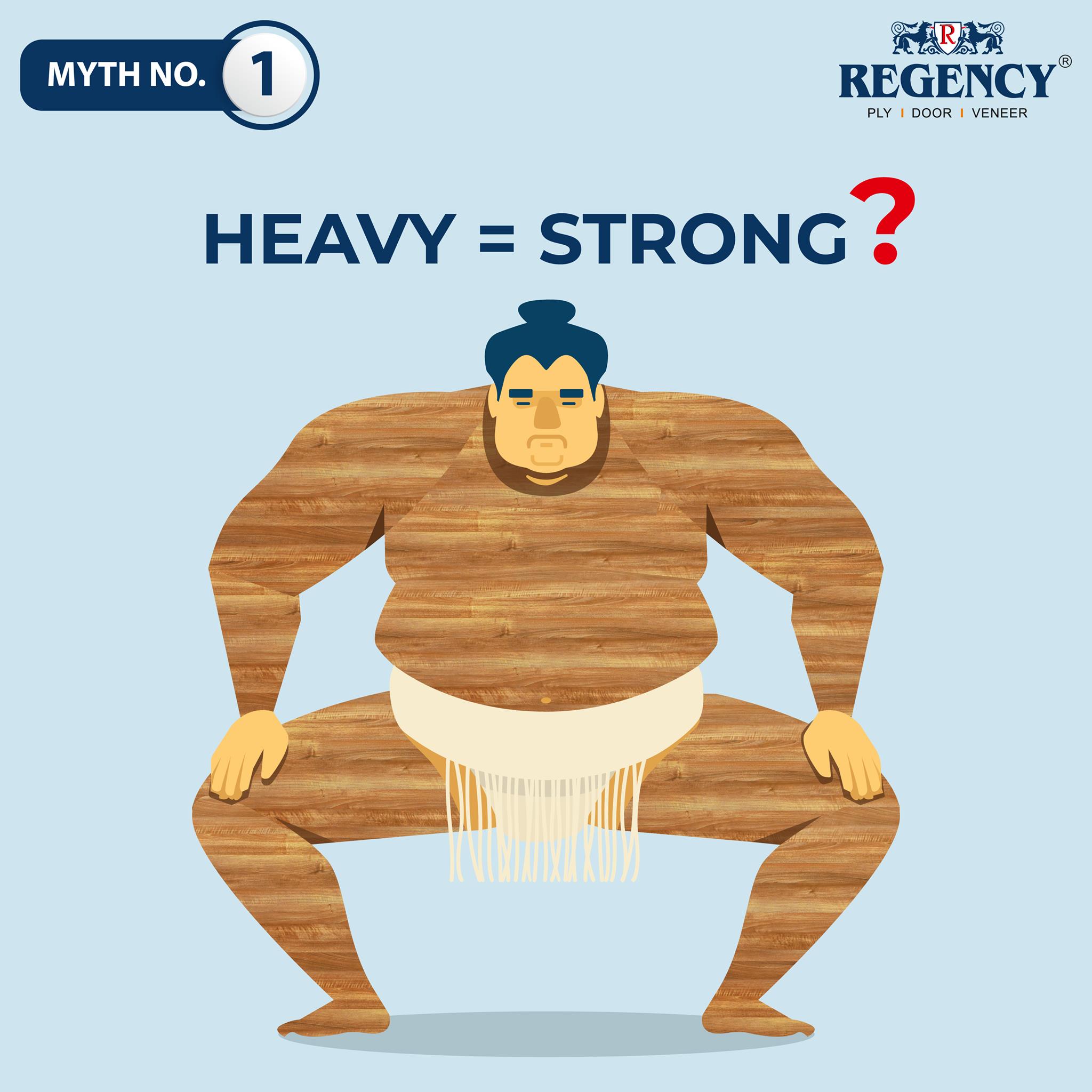
Busting ten myths associated with the plywood industry
There are many Myths regarding Plywood. These misconceptions are so strong that they influence a major chunk of consumers’ choices. We, at Regency Ply, have decided to present a series of such myths every alternate day.
Myth1: Heavier the Plywood, better its quality
Did you know that earlier aeroplanes were made of very lightweight Spruce wood?
In India, there is a common perception that heavier timber species will be better in quality. The same perception goes with Plywood too. However, it is partly true. That’s why heavy timber is only used for plywood manufacturing in India. The weight of the ply has no relevance to durability, bonding strength and resistance against termites or borer.
In fact, in Western countries, plywood with lighter weight and better strength is preferred. This is why, many superior quality imported plywood are not successful in India because of this typical Indian mentality.
Myth2: Warpage in plywood means defect in plywood
One prime reason for warpage is improper drying of the core during the manufacturing process but mild warping may also occur because of a change of moisture content in the climatic condition between the place where it was manufactured and the place where it was used. A certain amount of warping is always permissible unless it is in severe form.
Myth3: Termite and Borer are the same
Borer is born from within the plywood, while termite attacks the wood from outside. While borer is caused due to timber used in the manufacturing of plywood, termite is a result of improper treatment of the soil during the construction of the building. We can get rid of borers with specialized chemical treatments and increase the termite resistance of plywood with some special chemical treatments.
Myth4: All green/dark brown coloured plywood is Marine Plywood
India has a unique tradition of imparting green or dark brown colour in Marine Grade Plywood. There is no relation between the marine property of plywood with its colour.
Taking advantage of that, the market is flooded with commercial plywood in the same colour and sold as Marine Plywood.
Myth5: Good appearance of plywood means better quality
The quality of plywood must be measured based on its technical soundness. The appearance has aesthetic value but has no relevance to quality. Most of the time, the plywood is covered using laminates & veneers for a great aesthetic appearance. It is advisable to focus on the quality and not judge the ply by appearance solely.
Myth6: Higher price means better quality
People often feel that a higher price of plywood means higher quality. But this is not essentially true. The qualities of plywood differ but most of the companies sell similar quality plywood at a higher price to recover their marketing cost. Distinguishing between the quality plays a crucial role in buying plywood irrespective of its price.
Myth7: If you cut plywood and inside core is red hardwood, it is Waterproof
This myth among the carpenters, especially in Mumbai, led to the flooding of Red hardwood dipping grade plywood which is sold as waterproof or semi-waterproof plywood. The term Semi Waterproof is also misleading because in most cases it is just normal commercial-grade plywood with dipping in colour. Always remember that commercial or waterproof grade plywood solely depends on the type of glue used and nothing else.
Myth 8: Moisture Resistance (MR) grade plywood means resistance against moisture
Although Moisture-resistant grade ply can resist a certain degree of moisture and humidity, it is not waterproof plywood. This comes under the category of Commercial Plywood.
Myth9: Any plywood made of reddish wood is Gurjan
It is very difficult to identify genuine Gurjan plywood visually. A layman thinks that all red colour cores are Gurjan cores. But the fact is that neither all red cores are Gurjan, nor all non-red colour cores are non-Gurjan. Only certified laboratories can identify the core of Gurjan from plywood.
Myth10: Plywood increases deforestation
Deforestation is often regarded as a side effect of manufacturing plywood. However, the fact states that plywood can also be produced by pasting together thin sheets of veneers, made from timber waste apart from logs cut directly from trees. Deforestation would have been at a greater degree if the wood had been used directly in place of plywood for making furniture.